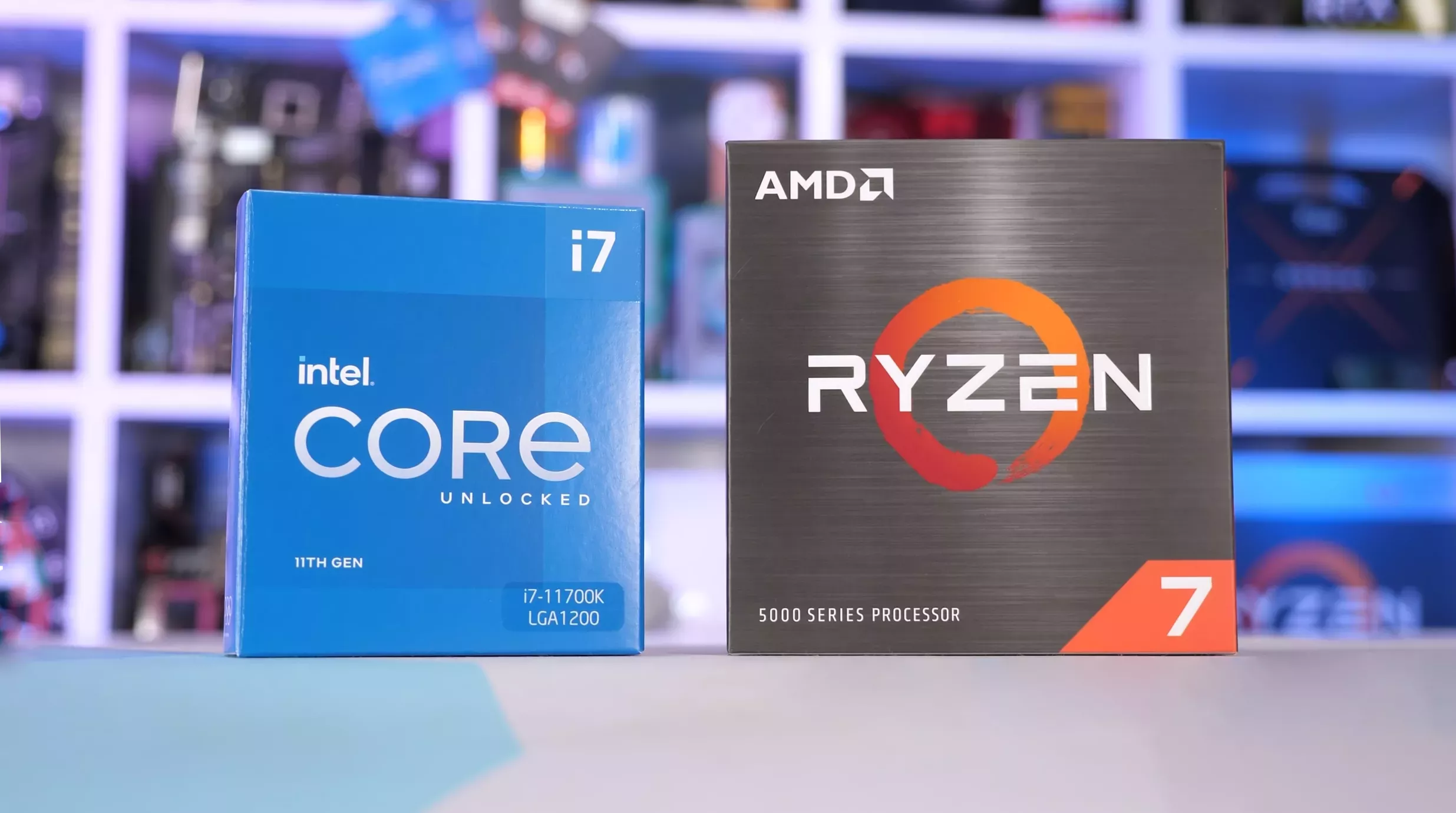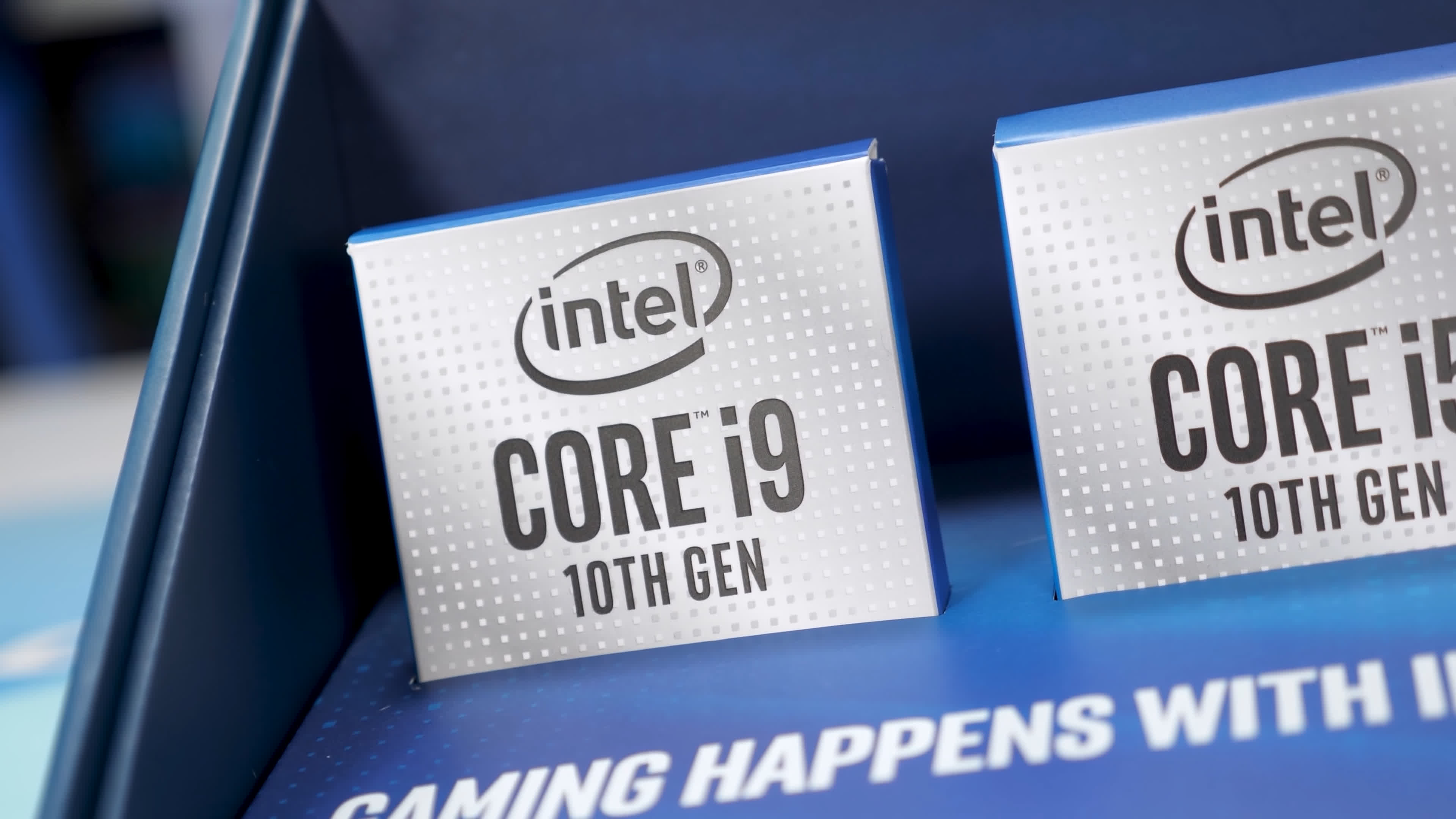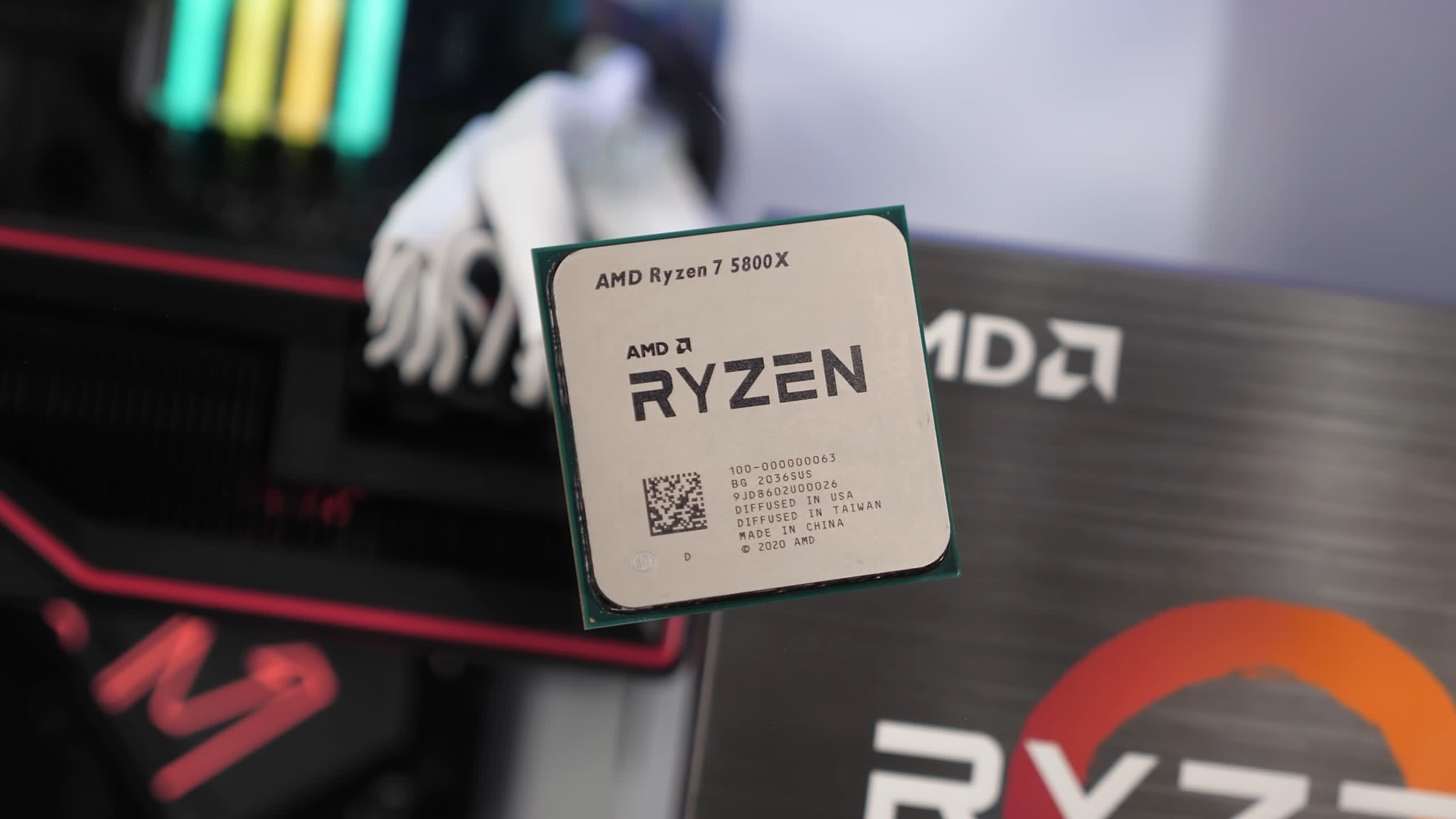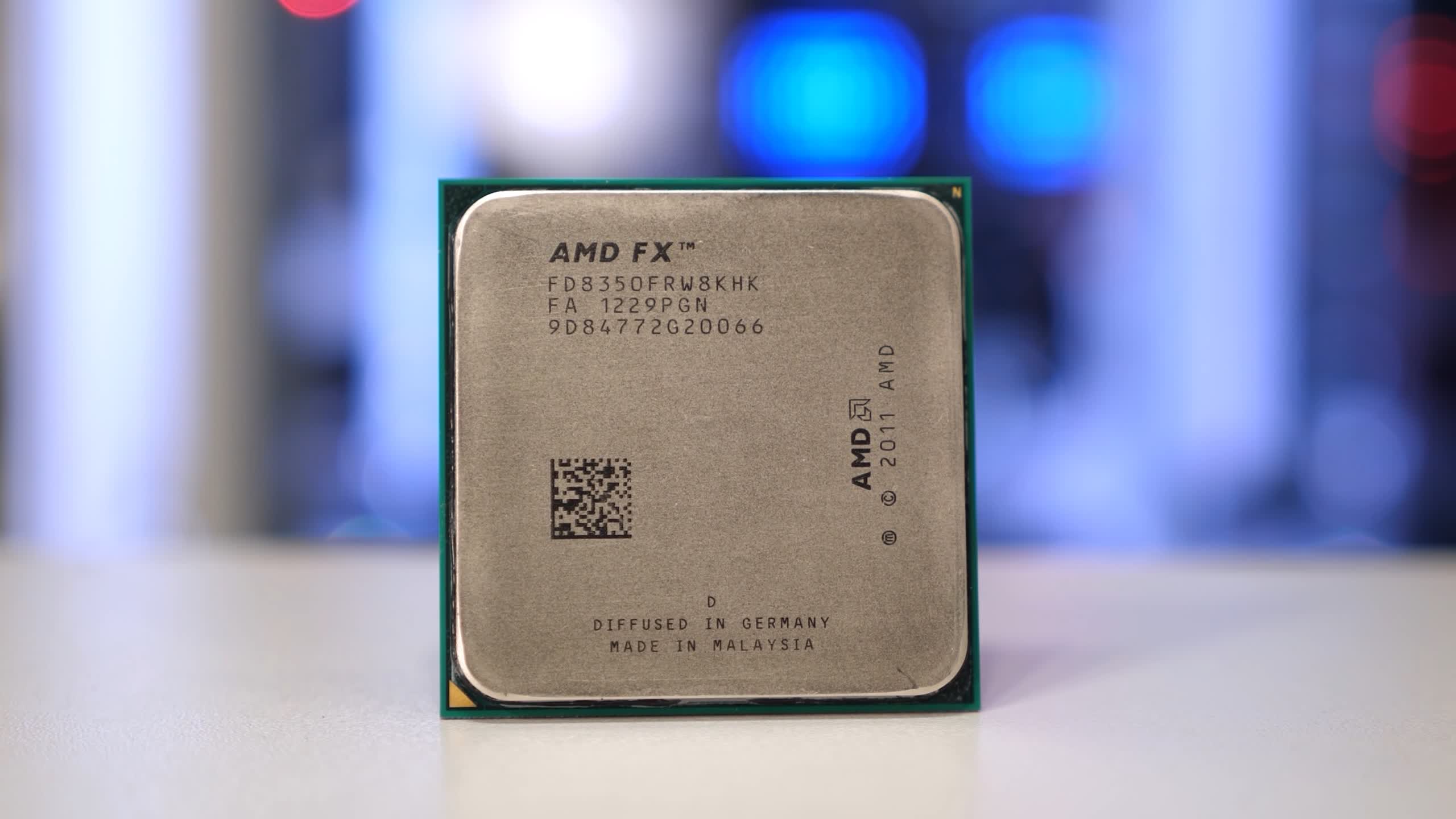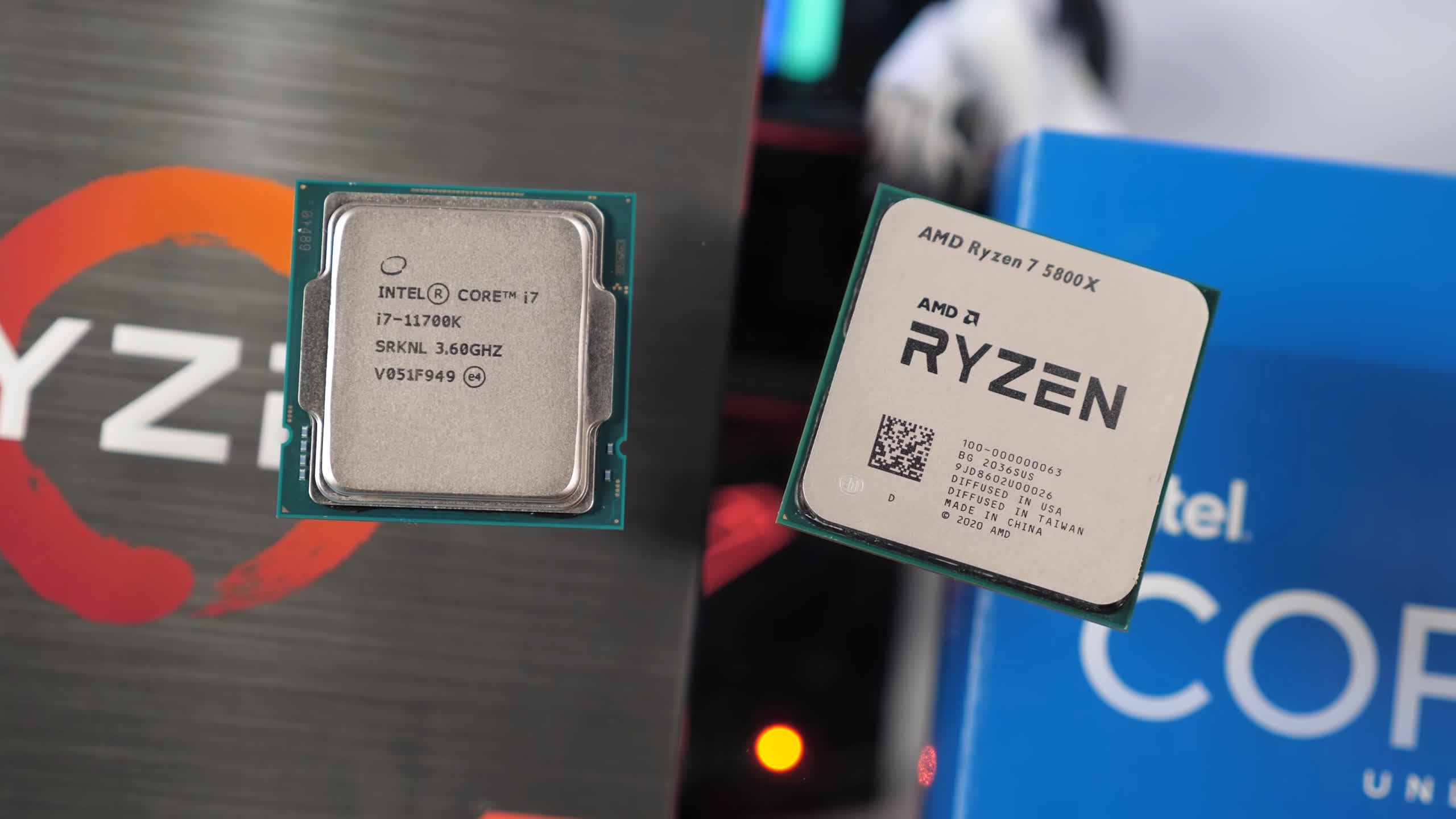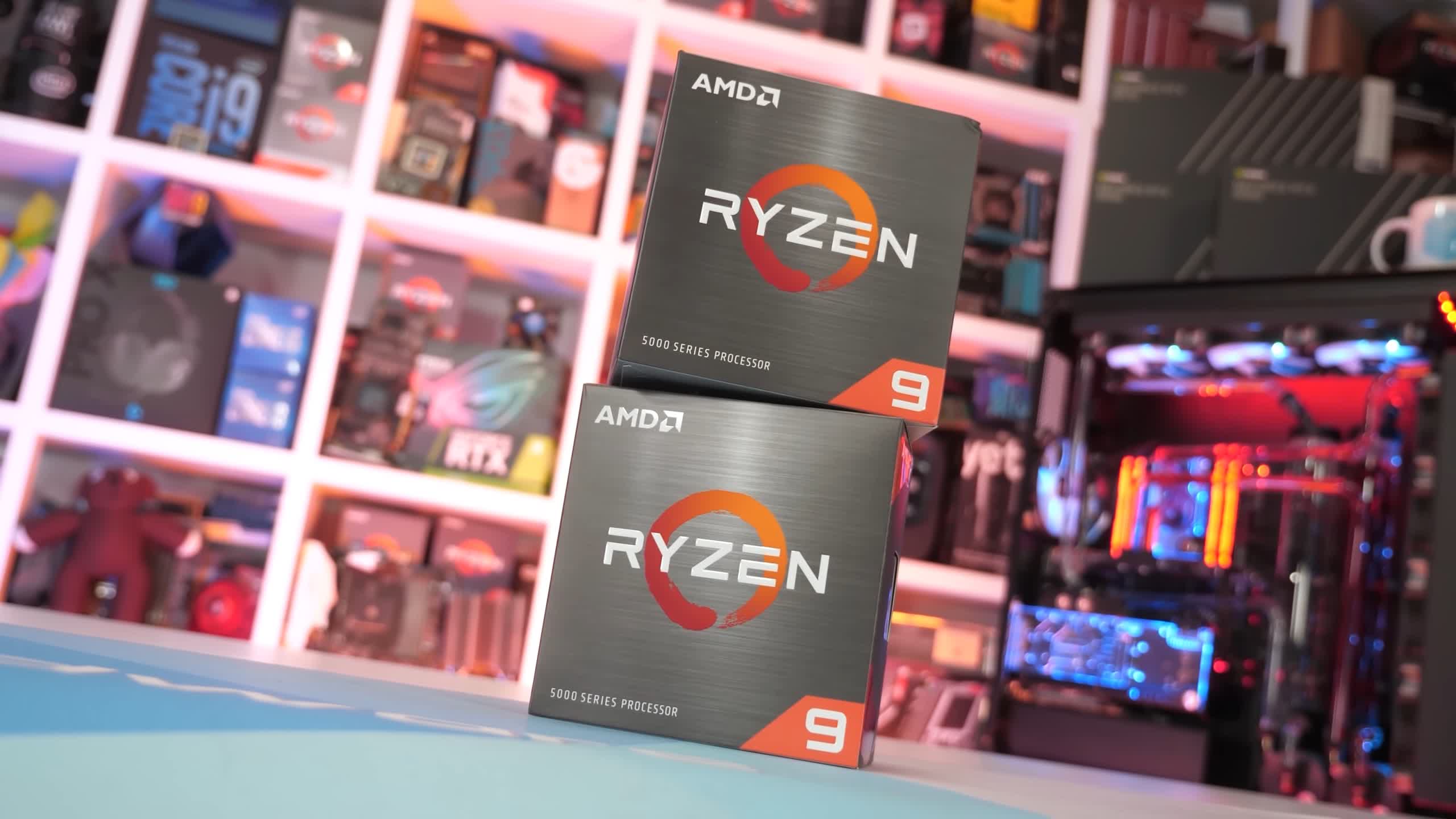After looking at the last few generations of Intel and AMD CPUs separately, here's our final installment in the gaming performance progress series. In this article we'll be comparing a decade of AMD and Intel CPUs head to head.
For those of you who missed the first few articles, this all began with a look at Intel's 10th generation Core CPUs, where we tested Core i3, i5, i7 and i9 models at the same clock speed and with the same number of cores active. This gave us a clear and very interesting look at how L3 cache capacity influences gaming performance, and we found that for today's games Intel often sees its biggest performance uplifts when increasing the L3 cache capacity, rather than adding more cores.
By limiting all CPUs to just 4 active cores with 8 threads at the same clock frequency, we got a really good look at stuff that hasn't been tested before, and that led to comparisons with older Intel CPUs.
Naturally, the next step was to do the same with a range of AMD processors while normalizing the core count and clock frequency. This exposed just how weak the old FX series was, and the huge leap AMD has made with each successive Ryzen generation.
This CPU architecture benchmark was an interesting way of looking at the progress both companies have made. Now all that was left for us to do was test a few more CPU generations that were missing from previous articles such as Sandy Bridge, Ivy Bridge, Haswell, and of course, Rocket Lake, and throw all the data together.
So for this test, all CPUs were clocked at 4.2 GHz with the exception of the Ryzen 7 1800X which only clocked to 4.1 GHz, but that's just a 2.5% frequency discrepancy that won't influence results in a meaningful way. Models using DDR4 memory were paired with DDR4-3200 CL14 and DDR3 models used DD3-2400 CL11 memory. Other than that everything is as apples to apples as possible with every model running with 4 active cores.
Please note no cores were disabled on the FX-8350, so if you believe it's an 8-core CPU then I guess 8 cores were active. Whatever the case, it's either a slow quad-core or a beyond terrible 8-core processor, we'll leave that for you to decide. Throughout our gaming tests we used the Radeon RX 6900 XT. Let's dig into the data...
Benchmarks
Starting with Rainbow Six Siege results, we see that when comparing the 2012 options – AMD Piledriver and Intel Ivy Bridge architectures – we see that Intel delivered 21% better frame rates and a 29% stronger 1% low, which was a significant advantage and as a result AMD was forced to sell their parts at a much lower price. That really stung considering the FX dies were almost twice the size at 315mm2, and as a result were also significantly more power hungry.
From Ivy Bridge to Haswell we're looking at a very strong 23% performance uplift and I don't recall seeing margins that big back in 2013, but of course, games weren't as demanding at the time and GPUs weren't nearly as powerful. In fact, it was extremely difficult to highlight the benefits of SMT technology for games.

By 2013 though things were getting dire for AMD as they were competing with Haswell and clock-for-clock Intel was ahead by almost 50%, at least in this kind of games. Broadwell with its eDRAM doesn't offer much over Haswell, a small 4% gain which is nothing to write home about. In 2015 we also received Intel's Skylake architecture and by this point virtually no one even uttered the name 'AMD' when discussing CPUs. That's because everything else being equal, Intel was offering 73% greater gaming performance in RSS.
This is where things start to stagnate for Intel. From Skylake to Kaby Lake we see their smallest performance gain in generations. Basically nothing was gained from the 6700K to the 7700K.
Then as we discovered recently, since Skylake the key source of improved gaming performance by Intel has been to increase the L3 cache capacity. This starts with the 8700K which jumps up from the 7700K's 8MB L3 cache to 12MB and this results in a minor 4% performance boost in Rainbow Six Siege. Then Intel upgraded to a 16MB L3 cache with the 9900K and although the core count and clock frequency remained the same at 4.2 GHz, the frame rate was increased by a further 5%.
Of course, while Intel was stuck with what was essentially Skylake but with more cores and cache, AMD saw room to make its reappearance. Ryzen was unleashed for the first time in 2017, five years after the FX-8350. The first generation architecture was nearly 40% faster when compared to the FX series in Rainbow Six Siege.
But as impressive as that gain was, AMD was still miles behind Intel when it came to gaming performance. In this example, they roughly caught up to Haswell, where Intel was back in 2013. Ryzen appealed to enthusiasts as it offered more cores and as such was a productivity beast. So although the gaming performance wasn't exactly impressive, it was decent and there were other positives on offer which helped make the series a success and a step in the right direction for AMD.
As Intel added two more cores with Coffee Lake, AMD needed to press forward and they did that with Zen+. Here the 2700X offered a decent 9% improvement – still 17% slower than Intel's 2018 architecture – but the gap was slowly closing. In 2019 things really heated up when AMD launched Zen 2 and they were no longer on Intel's heels with the 3800X trailing the 9900K by just 5 to 10%.
With the 2020 release of Zen 3 the time finally came where AMD could surpass Intel in gaming performance and give the final death blow to the 14nm process. Clock for clock AMD was now 16% faster, and of course, Zen 3 did clock very well, so for the most part AMD was now faster for gaming. Intel tried to lessen the blow with Rocket Lake and while some gains were made, in some instances like what we see here, Intel took a step backwards.
That was a long look at the Rainbow Six Siege results, so we'll summarize some of the following games...
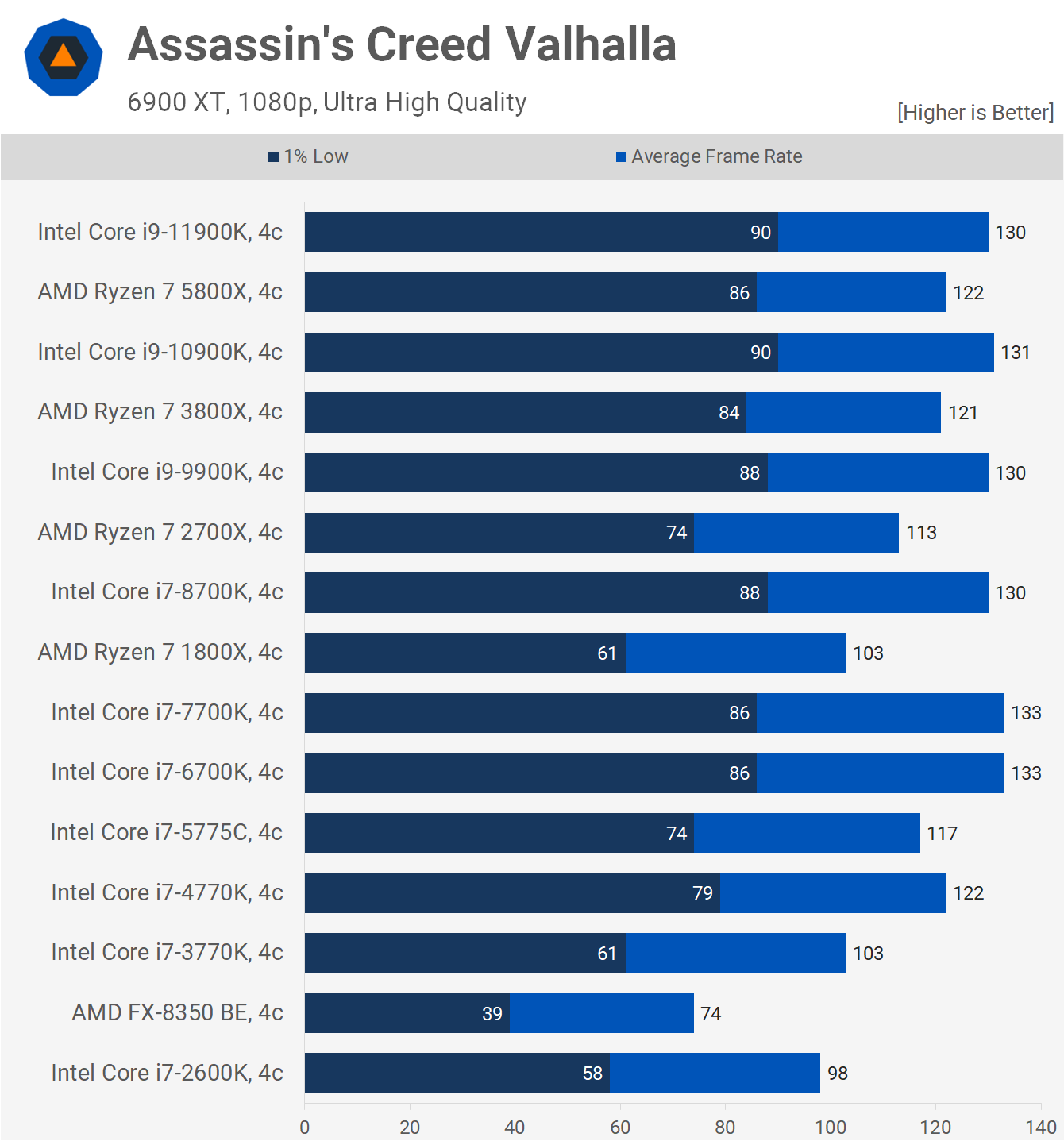
Assassin's Creed Valhalla provides us with far less interesting data as this one is mostly GPU limited and doesn't make good use of the CPU. Intel capped out with the introduction of Skylake and AMD never managed to catch them, but if we look back to 2012 where Intel was up to 56% faster, today that margin is just 7% in Intel favor, at least when matched clock-for-clock at the same core count.
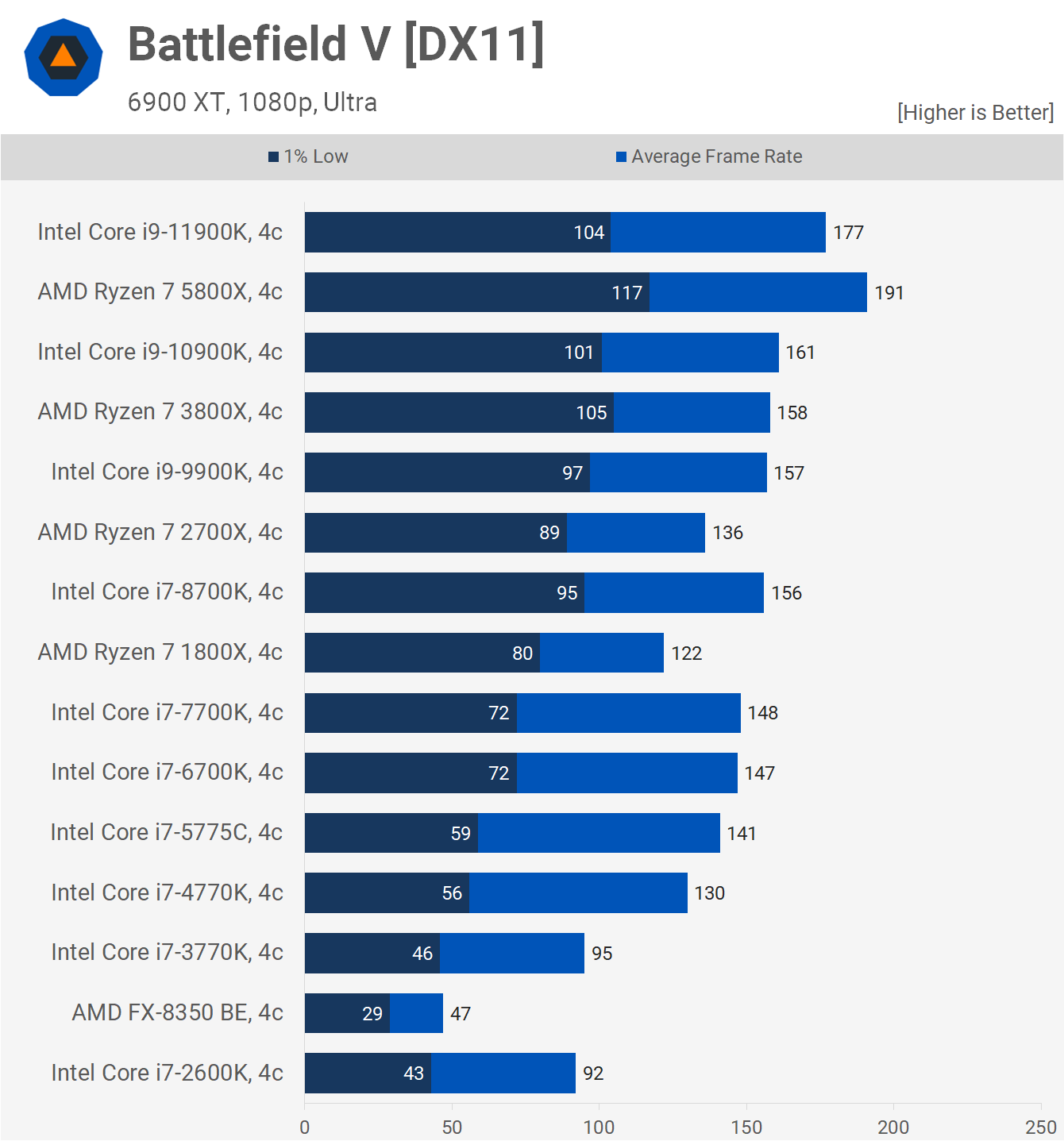
Battlefield V was brutal on the AMD FX-8350. Here it managed just 47 fps on average while the 3770K was good for 95 fps, a 102% performance increase from Intel in 2012. If that wasn't bad enough Intel achieved a 37% increase with Haswell, jumping up to 130 fps on average, almost an 180% increase from the FX-8350. From Haswell to Broadwell we see a modest 8% increase and then from Broadwell to Skylake a 4% increase, while Kaby Lake offered nothing new.
After Ryzen arrived, we're looking at Haswell-like performance, though that's not entirely accurate. While the average frame rates are a close match, the 1% low performance of Ryzen was almost 30% better. AMD then achieved an 11% increase from Zen to Zen+ while Intel boosted clock to clock performance by 5% by increasing the L3 cache capacity of their Core i7 range.
Again, it was Zen 2 where AMD brought real pressure, boosting performance by 16% which was enough to match Intel at the same core count and clock frequency in this game.
Intel did see a performance uplift with their 11th generation, jumping up to 177 fps on average which is a 10% boost. Despite that improvement, AMD is still out in front with Zen 3, offering 8% more performance on average. This means from 2017, Intel has achieved a performance improvement of 20% while AMD almost tripled that with a 57% improvement from Zen to Zen 3.

F1 2020 isn't as hard on the CPU as Battlefield V, but even so we see strong gains across most of CPU generations. The 2012 match up sees Intel able to deliver 46% greater performance with Ivy Bridge when compared to Piledriver. Then from Ivy Bridge to Haswell we see a modest 12% increase and this time Broadwell offered a 10% boost over Haswell, so for a few years Intel was managing to eke out some decent gains on the 14nm process without adding more cores.
That came to a screeching halt with Skylake, and we see no real change from the 6700K to the 8700K, which was a problem for Intel as AMD started to strike back with Ryzen.
Ryzen wasn't exactly amazing out of the gate with the 1800X only able to match the 5-year-old 3770K. Zen+ gets AMD up to speed with Haswell or thereabouts, and Zen 2 puts them on par with Broadwell and not a great deal behind Skylake through to Coffee Lake. A massive boost is seen with Zen 3 to finally hit the lead, even against the more recent Rocket Lake architecture.

Hitman 2 shows an 11% performance increase from Sandy Bridge to Ivy Bridge which isn't something we see often, though I wonder how much of this is down to the difference in PCI Express bandwidth given we're comparing PCIe 2.0 vs 3.0. Whatever the case, it means in 2012 Intel's architecture offered 33% more performance in this title.
Then from 2012 to 2013 Intel managed to improve performance by a whopping 38% and that meant their lead over AMD was blown out to 84%. As we've seen a number of times now, Intel managed reasonable performance gains from Haswell to Broadwell to Skylake, and that's where things slowed considerably for the Blue Team. It wasn't until the 11th-gen that Intel managed a solid performance uplift and in this example it was enough to beat AMD's Zen 3.
But well before the arrival of Zen 3, AMD had to make do with first generation Zen and here they were still slower than Intel's 5 year old Haswell architecture. Zen+ did get them on par with Haswell and Zen 2 pushed them up to Skylake, which meant they were competitive with Coffee Lake.
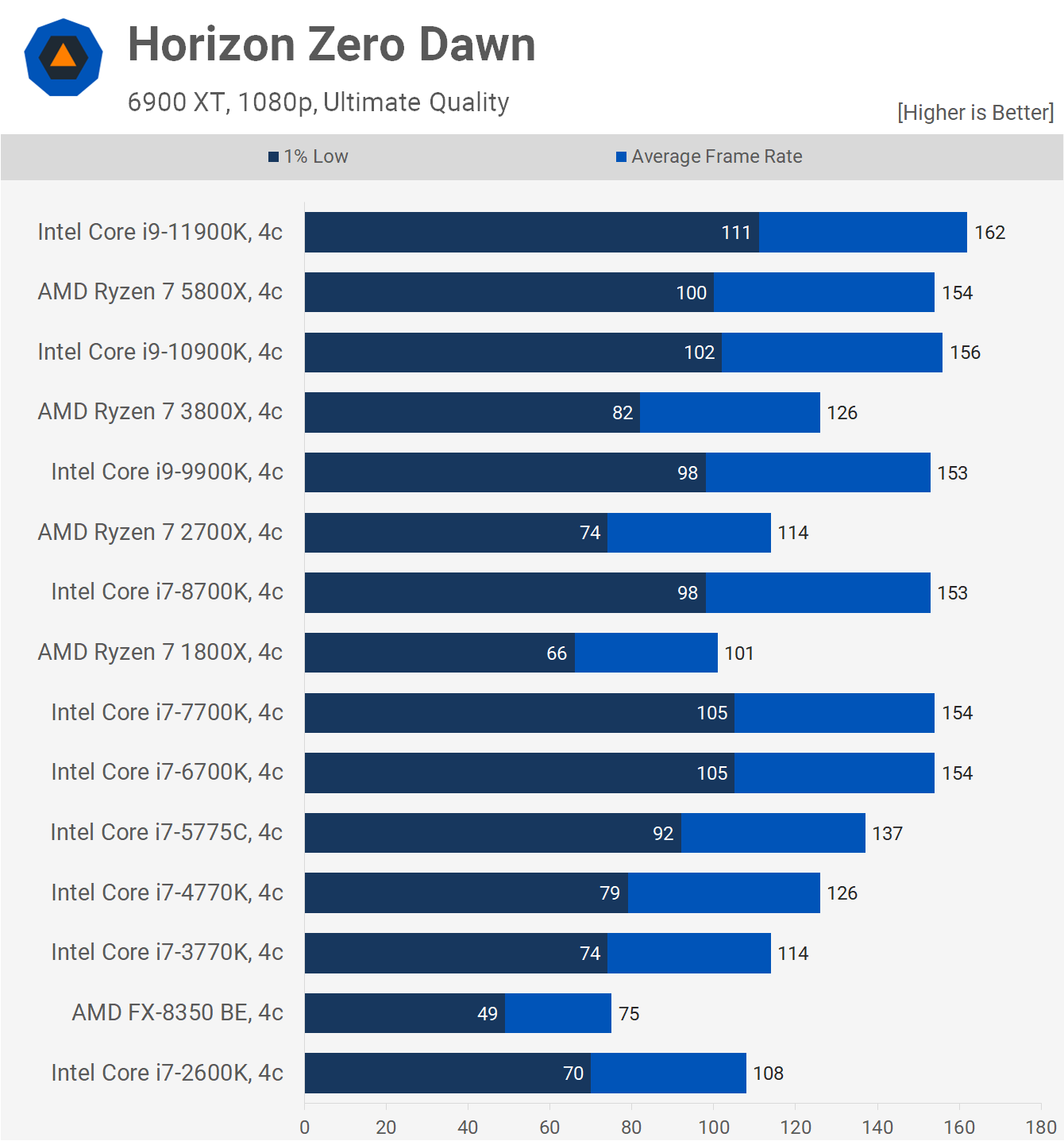
Horizon Zero Dawn performance on Intel CPUs is very similar to that of Assassin's Creed Valhalla in the sense that they were able to max this one out with Skylake. AMD, on the other hand, took until Zen 3 to get there. AMD improved performance by just over 50% from 2017 to 2020, while Intel didn't move but they were already out in front.

The Cyberpunk 2077 results don't look that different to other CPU demanding games we've checked out so far. In 2012 Intel enjoyed a 48% architectural performance advantage and by 2015 that margin more than doubled to 110% with Skylake. This is why the AMD FX series was such a disaster for the company. Aware that it was a complete failure, they were forced to shift gears with a fundamental redesign and that took time.
So starting in 2012, it took five years before we would see another flagship CPU from AMD, and in that time they were forced to do battle with Intel who in this example had a 110% architectural advantage while using half as much power, brutal stuff.
What we can also see here is Intel's steady refinement of their 14nm process up until Skylake. From Sandy Bridge to Skylake, Intel found almost 50% more performance over a 4 year period which is remarkable. However, from Skylake to Rocket Lake which is a 6 year gap, they found just 13% more performance when not adding cores and running at the same clock speed.
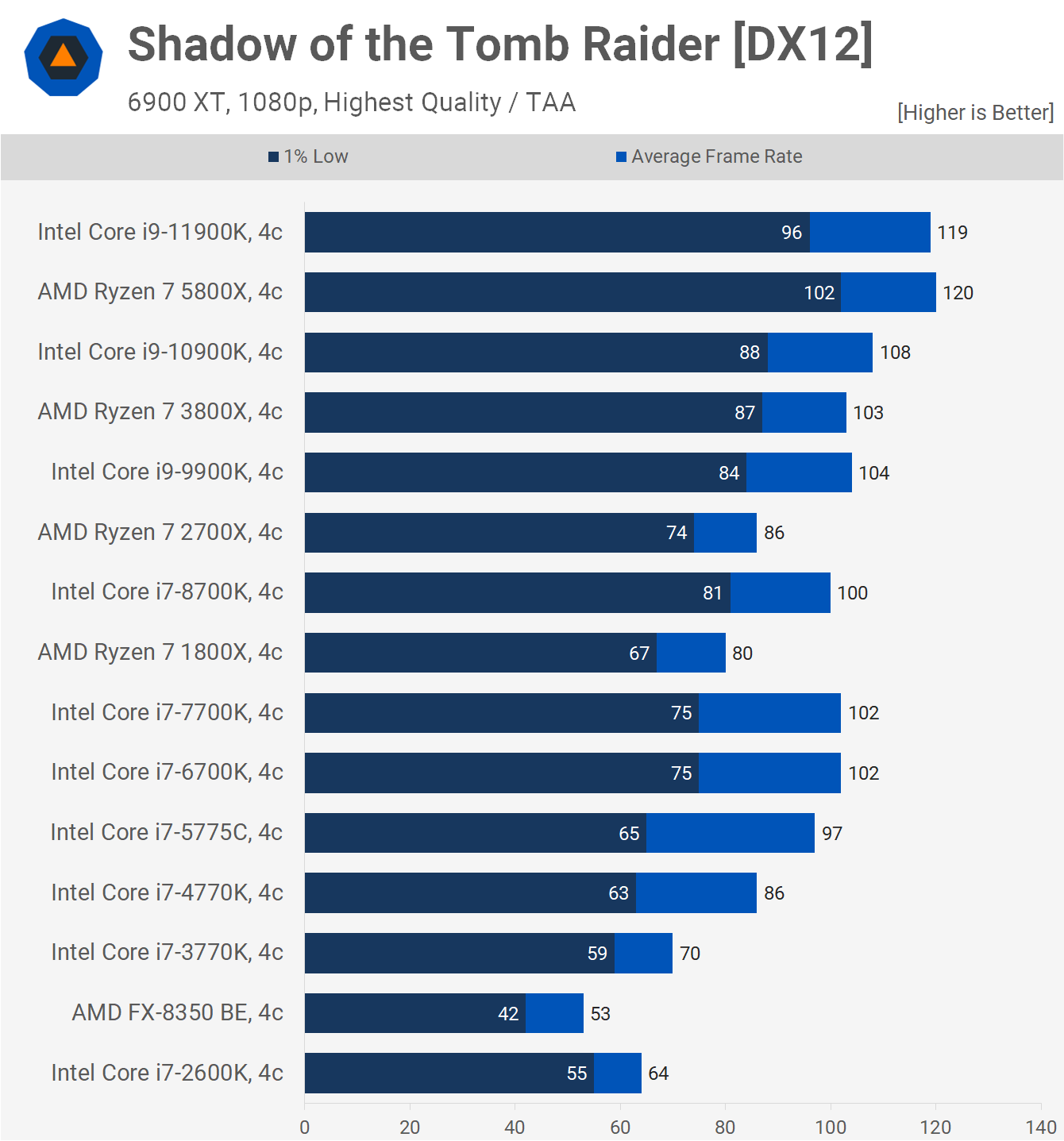
Shadow of the Tomb Raider shows us how Intel enjoyed the benefits of a significantly more efficient architecture nearly 10 years ago, delivering 32% more performance at the same frequency. Then from Ivy Bridge to Haswell we see a further 23% increase for Intel and from Haswell to Broadwell a 13% increase. Then things start to slow down, Skylake was just 5% faster than Broadwell, and that means from the 6th generation to the 10th Intel boosted performance by just 11%.
We also see AMD shadowing Haswell with Zen and then matching it with Zen+. But by the time Zen 2 arrived AMD were up to speed and then they raced ahead with Zen 3, though Intel did catch them up a little with Rocket Lake.
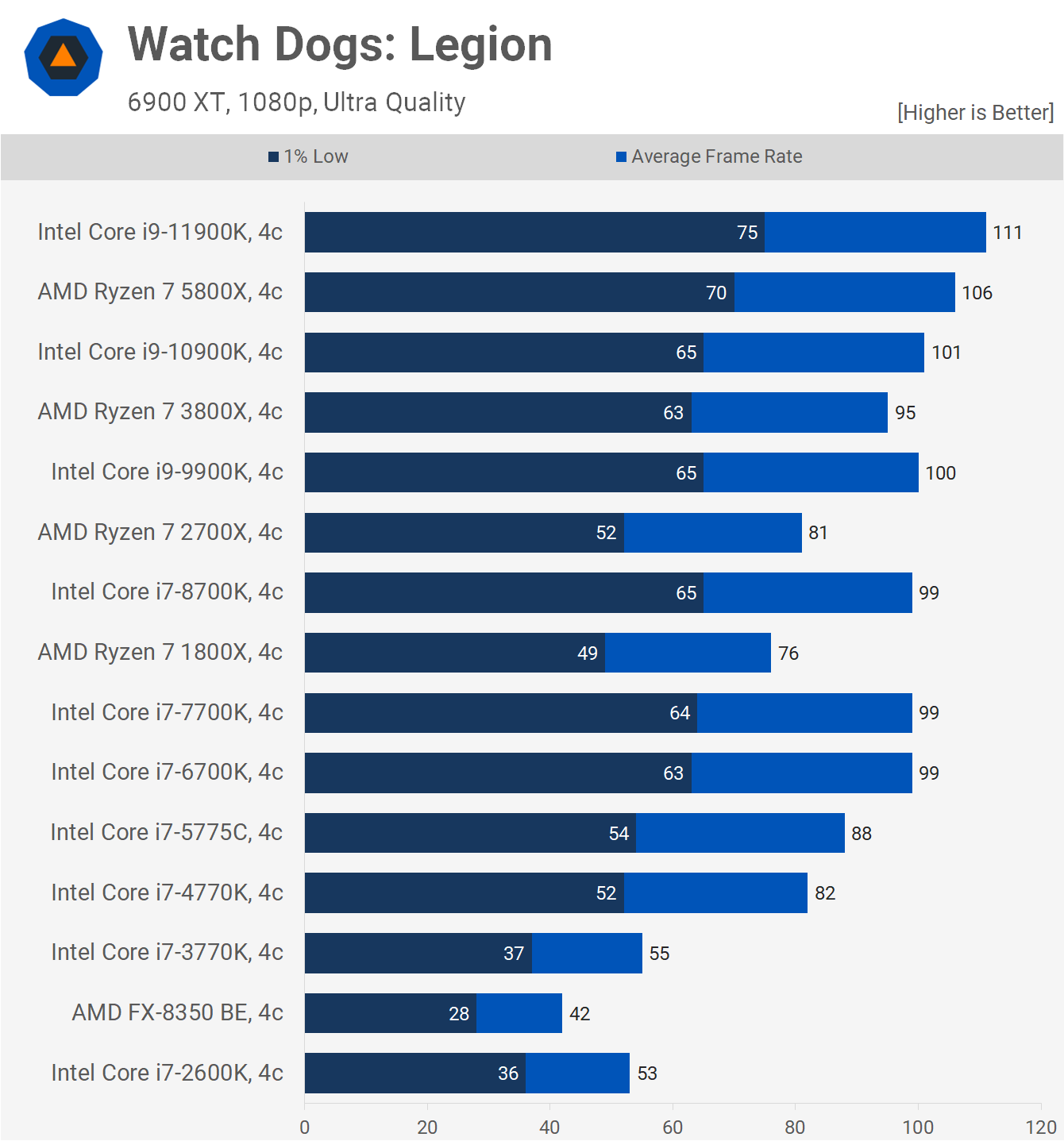
Watch Dogs Legion provides us with another good example of Intel stagnation over the last 6 years, essentially hitting a brick wall with Skylake, though they recently overcame that with Rocket Lake. As before, we can see how brutal pre-2017 was for AMD, blowing a margin in the 95% range with Haswell and AMD wouldn't be able to match that level of performance until 2017 with Zen.
Performance Summary
All the data we've gathered provides real insight into how AMD and Intel CPU architectures compared over the past decade for gaming. We've seen AMD come from nowhere to often beating Intel, while the latter has made smaller steps in pure architecture terms in the last five to six years. Let's take now look at the 9 game average...

Back in 2012 Intel was ahead by a 43% margin on average when comparing the FX-8350 and Core i7-3770K at the same clock frequency. That's a massive difference, compounded by the fact that AMD consumed significantly more power at the time.
But if only that was a worst case scenario for AMD. Just a year later Intel extended that margin to 77% and by 2015 they were 110% ahead.
Technically, the 6700K wasn't even Intel's flagship desktop part in 2015, that honor goes to the Core i7-5960X and its 20MB L3 cache, but that's a different story. Given that massive performance discrepancy, AMD was forced to slash pricing from the $195 introductory price in 2012 to just $120 in 2015, with some sales seeing the chip drop as low as $90. That would be like AMD having to sell a part like the 5800X at less than $200 today.
Clearly, AMD was able to turn around this situation years later. And although Zen wasn't a gaming monster in 2017, it was good enough to improve upon those foundations. Zen+ continued that trend in 2018 and by 2019 AMD was smashing Intel's desktop CPU sales.
What We Learned
As we wrap up this interesting look at the architectural performance differences for gaming between AMD and Intel over the past decade, this evolution clearly highlights why our reviews have been mostly positive towards AMD Ryzen processors from 2018 onwards, and why they were so pro-Intel prior to 2017.
It was extremely difficult to recommend AMD CPUs for PC gaming back in the FX days. The arrival of Ryzen marked a turning point, and while I wasn't completely sold on the first generation, at least for gaming, there were plenty of scenarios where you could recommend them.
Based on this data, you can see why Zen+ started to shift things in AMD's favor. They were still well down on Intel for gaming when CPU limited, but a lot of the time games aren't CPU limited, and not all gamers want to just play games. This made Ryzen a desirable and well rounded solution that was also cost effective.
With Intel and AMD now evenly matched in terms of gaming performance – AMD does hold a significant efficiency advantage, which is funny looking back at 2012 – we can't wait to see what the next generation of hardware brings.
There's a ton of promise behind Intel's 12th generation Alder Lake CPUs which are arriving very soon and are expected to bring big changes, which should be very exciting for prospective buyers and the overall market. Make sure you stick around for that as we plan to review the new chips when time comes.
